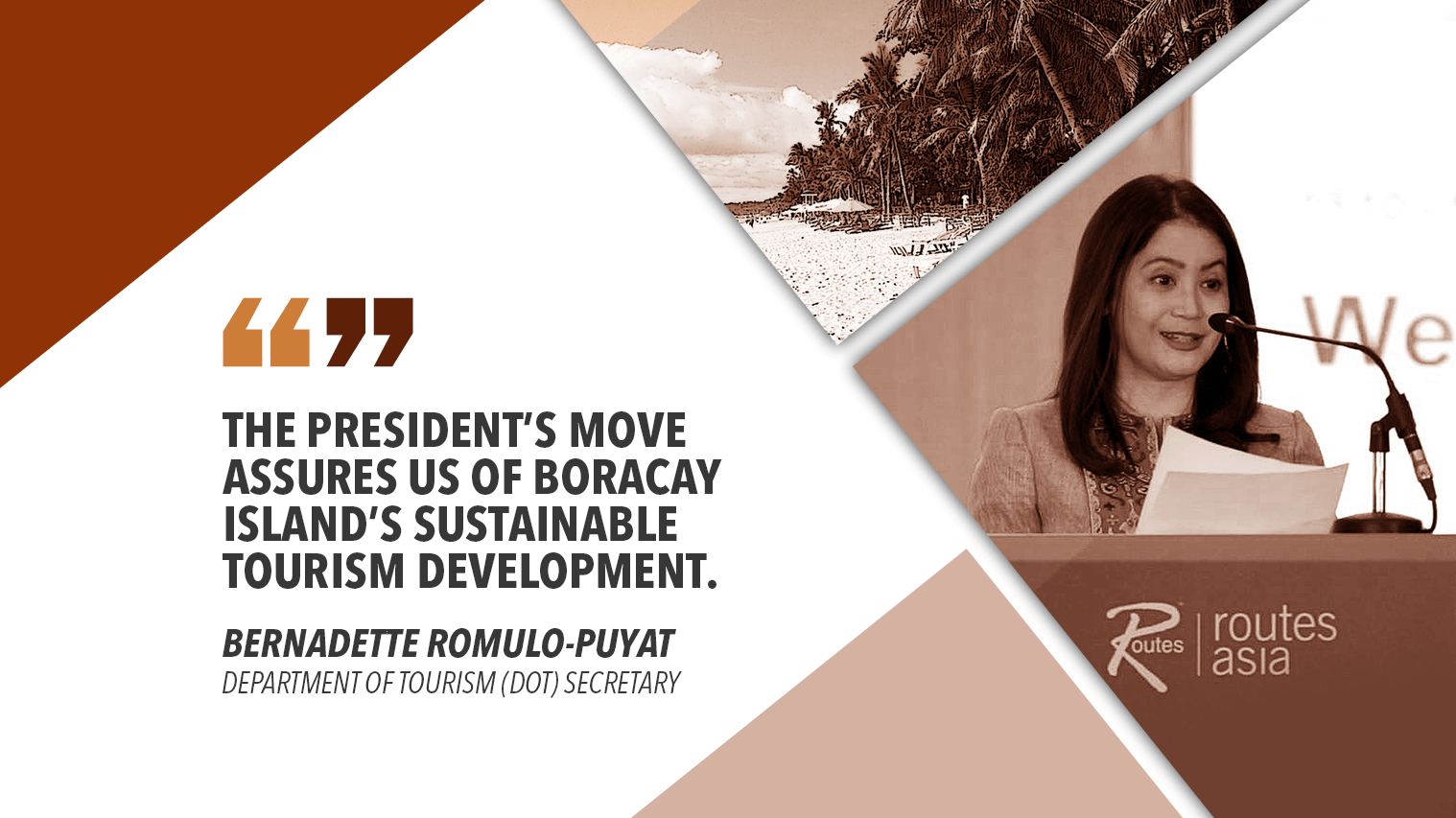Malacanang’s approval of the P25 billion Boracay Action Plan (BAP) signifies the commitment of the Duterte administration to sustain the gains from the resort island’s initial six-month closure, Tourism Secretary Bernadette Romulo-Puyat said.
“The DOT wholeheartedly welcomes President Duterte’s approval.”
“The Department of Tourism wholeheartedly welcomes President Duterte’s approval of the P25 billion Boracay Action Plan (BAP) to complete the island’s rehabilitation and continue its sustainable tourism development program,” Romulo-Puyat said.
“By essentially institutionalizing the functions of the Boracay Inter-Agency Task Force (BIATF) with the approval of the action plan, we can clearly see the government’s determination to sustain the gains of the initial six-month rehabilitation,” the tourism chief added.
”DOT will be heading the Thematic Cluster on Sustainable Economic activities including tourism and livelihood.”
The tourism head said the Department of Tourism (DOT) will be heading the Thematic Cluster on Sustainable Economic activities including tourism and livelihood.
“The President’s move assures us of Boracay Island’s sustainable tourism development with the BAP serving as the BIATF’s guide in ensuring sustainable and inclusive growth in the island with continuing opportunities for all stakeholders,” she said.
“The DOT is likewise pleased to note that the National Economic Development Authority (NEDA) has consolidated and packaged the BAP in line with local and national development plans and directions,” Romulo-Puyat noted.
In announcing the BAP’s approval, Presidential Spokesperson Salvador Panelo said the action plan has four themes–1) Enforcement of laws where there will be intervention on the regulation of visitors and hotel accommodations; 2) Prevention where there will be interventions on the sewerage infrastructure, solid and liquid waste management; 3) Rehabilitation and recovery of ecosystems; and 4) Sustainability of activities on the island such as improvement of roads and public health infrastructure, construction of permanent housing program for Indigenous Peoples and education facilities.

